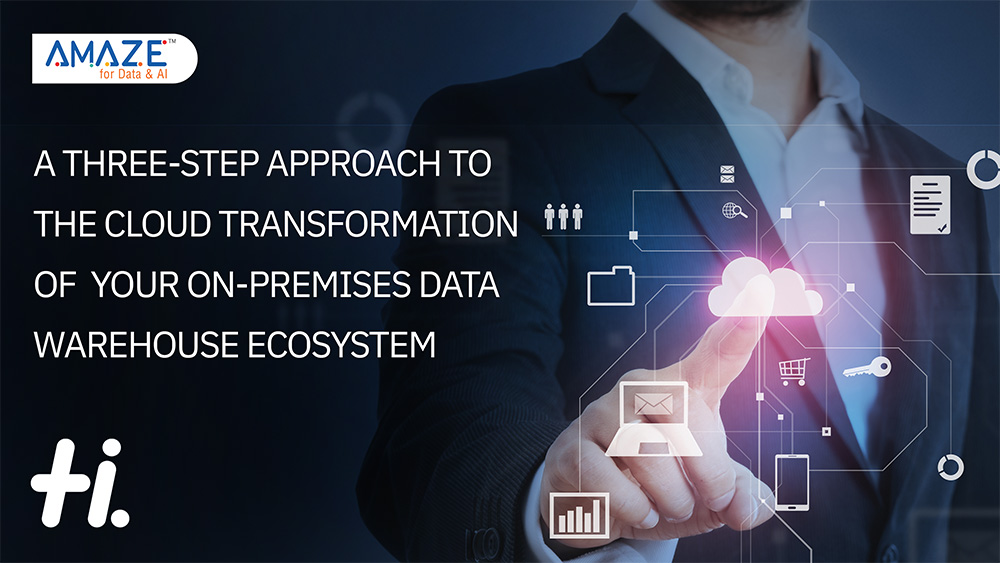
The days of the traditional enterprise data centre may be numbered. Even before the pandemic, organisations were moving away from on-premise infrastructure and towards data centres hosted in the cloud. The past two years, however, have seen an uptick in cloud migration, as businesses have sought greater flexibility in their modes of working.
According to Gartner, global expenditure on public cloud providers rose from $270bn in 2020 to $330bn in 2021. Meanwhile, enterprise IT spending on public cloud computing is set to overtake traditional IT spending by 2025.
As far as many enterprises are concerned, the benefits speak for themselves. Compared to on-premise data centres, cloud computing technologies offer greater efficiency, scalability, simplicity and global reach. Over the longer term, there can be significant cost savings too, given the lack of maintenance costs and the ability to scale up or down according to what you actually need.

For many companies, the expense, complexity and rigidity associated with traditional data centres means they are no longer worth the investment. Many companies also lack the skills base to properly maintain their data centres, which could expose them to security breaches among other operational risks. As a result, data centre exits have become a hot topic.
“We’re having more of those conversations today than we ever have, and I think it’s driven both by challenge and by opportunity,” says Neil Fox, SVP and North America CTO at Hexaware Technologies. “Our customers are finding the challenges of on-premise data centres to be harder now, post-pandemic, with the skill constraints we have today. The same is true on the opportunity side – companies now need to be more nimble, more agile. The elasticity of cloud-based infrastructure is priority number one for many of our customers.”
An achievable goal
Even if they didn’t define themselves that way a few years ago, the majority of organisations now see themselves as being data driven. Hexaware starts from the premise that every enterprise is a technology enterprise, whatever else they do on top of that. That means companies are becoming increasingly receptive to what cloud can bring. In many cases, they come to Hexaware looking to leave their data centres altogether.
“In some cases, our clients are talking about data centre consolidation, because they have gone through mergers and acquisitions and need to exit from some data centres while shrinking others,” says Fox. “Then there are others that are talking to us about building a strategy to exit their data centres completely, and move 100% into the cloud. It may take years to accomplish that, but it is a lofty but practical goal.”
He believes that in most instances, companies of every size can move their workloads into a cloud solution. Fox thinks the market is moving towards a new model, in which companies focus on their core competencies, and services like IT infrastructure are treated as a utility to be outsourced. After all, he asks rhetorically, you wouldn’t start your own phone company, so why would you run your own data centre?
Identifying the costs and priorities
However, this is not to say that the transition will always be plain sailing, or that it’s as simple as ‘lifting and shifting’ to the cloud. Companies need to be aware that their costs will increase in the short term, due to maintaining existing personnel and processes until the migration is done. Even further down the line, cost calculations can be complicated and can fluctuate depending on other factors.
“We go through financial modelling with our clients to say, you need to budget for duplicate costs for some period of time,” says Fox. “You need to consider those costs from a long-term perspective, asking at what point do we save money and how much do those cost considerations need to be offset with opportunities for value addition?”
While Hexaware’s Amaze suite of platforms will not eliminate these short-term costs, it does simplify and streamline the process. It uses automated tools to migrate clients’ workloads to the cloud, while analysing these workloads to assess where the priorities lie. Compared to a manual migration, the platform typically cuts timeframes by 60-80%.
“It identifies the low-hanging fruit – the workloads that can be migrated quickly and easily without a lot of human interaction,” says Fox. “Where are the opportunities to reduce costs, and then how do we segment those in terms of complexity and prioritisation? That’s the work we do with our clients to determine the plan for migrating those workloads to the cloud.”
This platform is suitable for SMEs as well as larger corporates. While smaller companies may be lagging behind in terms of cloud adoption – in part due to their heightened perception of risk – low-cost, automated solutions of this nature may assuage their fears. On the opposite end of the spectrum, many larger clients are focusing on lowering their data centre footprints and thinking about a wholesale exit.
The perils of going it alone
The company also works with clients to help them determine precisely what they’re looking for. While many clients do come with a clear idea in mind – they want to shift to a public cloud, or a hybrid model – that notion will typically evolve through conversation with Hexaware’s experts.
“Most organisations come to us with a destination in mind, and there’s little that we do to dissuade them,” says Fox. “We might entertain a hybrid solution for various reasons, where we might leverage some services from Google Cloud services or hybrid AWS, but largely they come to us with a decision that shifts 45 degrees in one direction or another. The largest discussions are around data – what the right data architecture should be, how you monetise data.”
This consultation with experts is key to a smooth transition. Companies that forge their own way may run into challenges, such as unexpected downtime, or inconsistencies once the application reaches the cloud. When it comes to cloud migration, Fox believes a little knowledge can be a dangerous thing.
“It honestly makes me sad that the more companies do try to go it alone,” he says. “To me, it’s a bit like dentistry. Sure, you likely can pull your own tooth, but it’s likely going to be incredibly painful. Nor will it be as efficient or effective as if you’d consulted an expert.”
To expand on the dentistry analogy, Fox adds that the best time to call a dentist is at the first sign of throbbing in your tooth. In other words, as soon as you’ve seen the signs that your data centre starts coming up against any issues, it’s time to start thinking about your exit strategy.
“It’s not going to get better on its own – it’s only going to get worse,” he says. “If you have lost skilled personnel and you’re having trouble replacing them, if you can’t manage the number of cyber attacks that are going on… there are probably a thousand different telltale signs that would cause that throbbing in your tooth. You certainly know it when you have it, and you need to call a dentist to find out what the cause of that throbbing could be.”








